Our liveaboard dive boat traveled 45 miles north of the main islands of the Galápagos and anchored off Wolf Island, a stark rock rising from the Pacific Ocean. During four days of diving here and at neighboring Darwin Island, we didn’t see any other humans. Our only company were soaring frigate birds, comical brown-footed boobies and an astonishing amount and variety of life beneath the surface.
The Galápagos National Park Directorate protects 97 percent of the land in the Galápagos Islands, which includes 127 islands, islets and rocks, four of them inhabited. Surrounding the islands is the Galápagos Marine Reserve, one of the largest in the world. The Galápagos Islands also are a United Nations Educational, Scientific and Cultural Organization (UNESCO) World Heritage Site. The directorate grants permission for select dive boats to operate here and sets rules for their operation.

This protection aims to conserve the habitats and wildlife in this special place while supporting a sustainable economy. Yet increasing tourism threatens to degrade the natural resources that attract visitors here in the first place — a conundrum facing many sensitive ecosystems around the world.
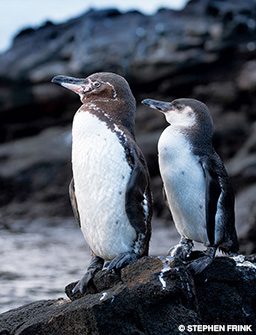
Before 1968 people could reach the Galápagos Islands only by boat, which limited the number of visitors. Airports and commercial flights, however, made the islands much more accessible. About 65,000 tourists visited in 2000, more than tripling to 225,000 by 2015. The population of the islands rose from 3,488 in 1972 to about 35,000 in 2015.
Supplying growing numbers of visitors and residents with clean water, food and other supplies puts an increasing burden on the environment, said Steve Walsh, director of the University of North Carolina at Chapel Hill’s Center for Galápagos Studies. In addition, most products come to the islands on ships, and increasing numbers of ships raise the risk of spills and the introduction of invasive species. A recent study recorded more than 50 nonnative species in the Galápagos; scientists previously knew of only five.
Tourism can do more good than harm, however, if both the travelers and the destinations get it right — this rings especially true for dive destinations, which often contain fragile ecosystems or have limited infrastructure.
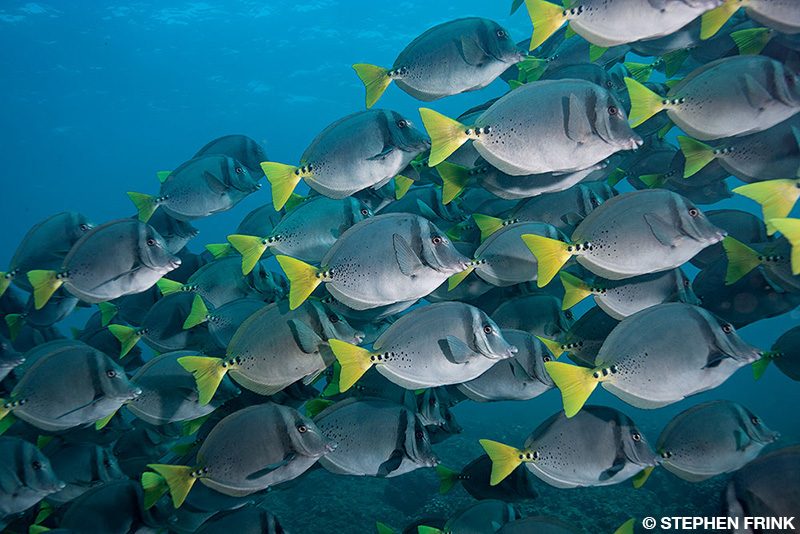
UNC and Universidad San Francisco de Quito collaborated to form the Galápagos Science Center (GSC) on San Cristóbal Island in the Galápagos. Researchers there developed computer models to run various scenarios that show the effects of various impacts on the islands, from changes in climate to increases in tourism. The results help officials balance economic development and resource conservation.
“The fundamental question is, How many people, both tourists and residents, is enough?” Walsh said. “The Galápagos deserves special attention because of its fragility, but with the right data we can export the model anywhere that is facing similar challenges.
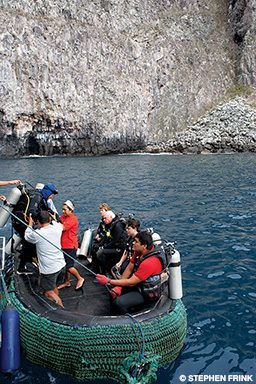
“We’re not saying people shouldn’t come to the Galápagos Islands,” he added. “We are saying that when they come, they should be informed.”
Informed visitors can make individual choices that help protect sensitive areas. For example, traveling during off-peak seasons reduces the impact of a visit, noted Brad Nahill, cofounder and president of SEE Turtles, a nonprofit organization that promotes conservation and volunteer travel. Off-peak travel also spreads economic benefits of tourism to a community throughout the year.
Choices matter about where to stay, where to eat and what to do. In the Galápagos, tourism is transitioning from boat-based to land-based, with more people now staying in hotels on the islands. In many places, that would be a positive development by putting more money into local communities. But when people spend more money in a Galápagos community, it draws more residents to an environment that cannot handle them. In practice, land-based tourism here can do more harm than boat-based tourism.
“In most places, tourism is one of the things you do to benefit people who have lived there for generations and generations,” Nahill explained. “But in the Galápagos, everyone is a transplant. No one lived there until tourists started coming. It flips the whole community benefit aspect on its head.”
Traveling to places with less-sensitive ecosystems or where fewer people go can have less effect on the environment. Plus, your visit has greater economic benefit.
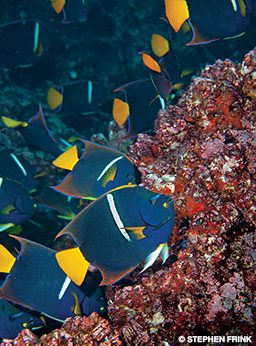
“You’re a drop in the bucket at a popular destination,” Nahill said, “but at a lesser-known site you have a lot of value to that community and its efforts to preserve its natural resources.” He recommends always seeking out smaller, community-oriented providers for everything from lodging to meals to tours.
Every trip creates a carbon footprint. Between 2009 and 2013, tourism’s global carbon footprint accounted for about 8 percent of global greenhouse gas emissions, according to a May 2018 article in the Nature Climate Change journal — four times more than previously estimated. That’s a good argument for purchasing carbon offsets for a trip.
“We try to look for a local offset option,” Nahill said. “Not one that takes your $20 and supports some unspecific thing somewhere.” He recommends the Ocean Foundation’s SeaGrass Grow, which restores and protects seagrass beds. These store up to 35 times more carbon than Amazonian rainforests and provide habitats for fish and small invertebrates.
Travelers can also volunteer at destinations they visit, such as conducting fish surveys with Reef Environmental Education Foundation (REEF) or cleaning up trash with Project Aware. “Don’t just go and see — go and do,” Nahill said. Choose responsible volunteering, and be aware of the effect on wildlife. In general, a nonprofit conservation organization is a better bet than a for-profit company.
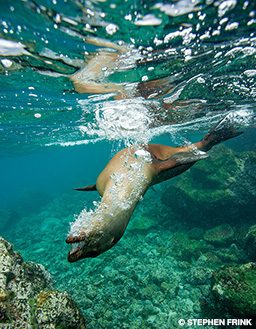
Participating in citizen science also helps. “We’re really keen on citizen science to help understand what goes on in the Galápagos Islands and elsewhere,” Walsh said. “Park rangers and tour guides are not enough eyes in the Galápagos, the second-largest marine reserve on the planet. But so many people take photos now, and cameras have geolocation information in them.”
“The spin could be that the Galápagos Islands are under crisis and people shouldn’t contribute to that by going there,” Walsh said. “But that’s not what we’re looking for. We are looking for sensitivity to what is going on there and in other protected areas. It is important for people to come to protected spaces, to become more insightful about the challenges and to leave with a renewed commitment to protecting these places.”
It is important, he added, for people to follow the rules and appreciate why those rules exist. “Some people chafe about limits on the number of people on a boat or on its comings and goings, but managers in the Galápagos take the responsibility seriously — not just to Ecuador, but to the world.”
Divers can help by serving as extra eyes and ears in protected areas and by following rules designed to protect the world’s sensitive ecosystems for all of us.
© Alert Diver — Q3 Summer 2019